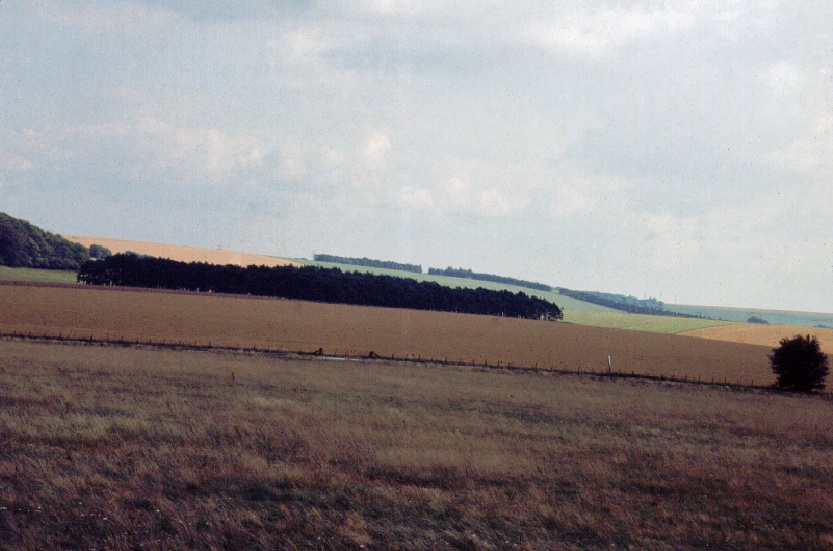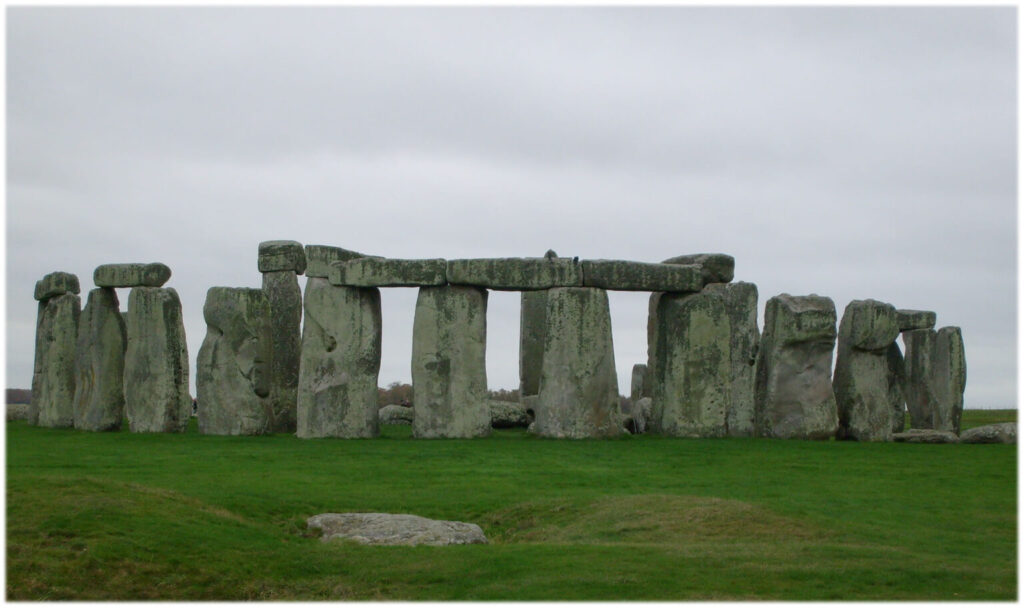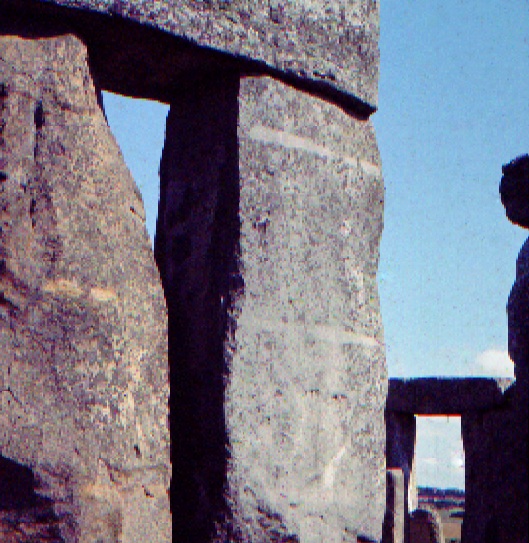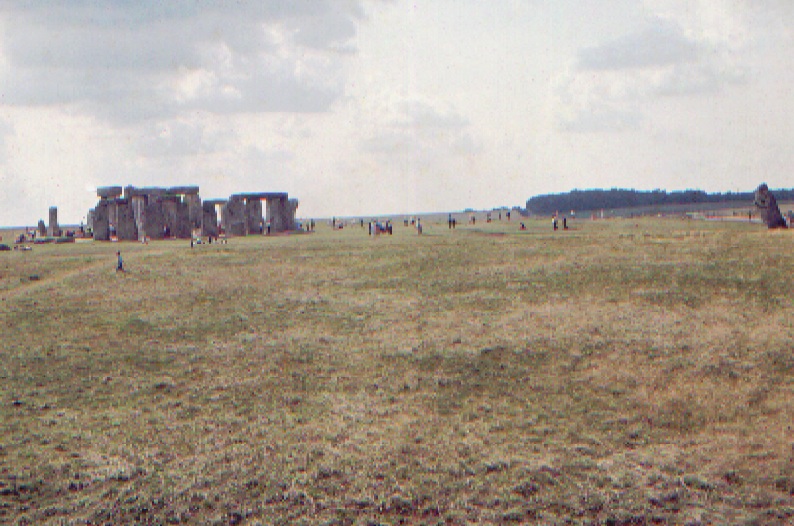Introduction: Stonehenge
DIGITAL EFFECT: Go to Evening
Fast forward to approximately 90 minutes after sunset.
Fade out music as stars, Moon and planets appear.
Good evening. The sky above us may look like an ordinary nighttime sky, but for today’s presentation, entitled “Stonehenge,” we have transported you to southern England, on today’s date, but about 3500 years ago.
Has anyone here visited Stonehenge?
[If so, ask them to describe the setting and the stones. Begin the visuals if appropriate.]
VISUAL 1 (still): View of the Horizon Around Stonehenge

This is how the area where we are camped looks in the daytime.
How would you describe the landscape?
[Gently rolling hills, plain, grassy, pretty, peaceful, etc.—accept all reasonable answers, encourage discussion.]
VISUAL 2 (still): Stonehenge Today

Optional Section, Good for Older Students
Look at the little sign on a post, just beyond the fence. You cannot see the front of the sign, but it says “No Parking.” Also notice the tree on the right side of the picture. It is a typical tree for the area.
Now from what you already know about the approximate height of “No Parking” signs, how tall would you estimate a typical tree in the area of Stonehenge might be?
[Accept several estimates, and ask for explanations of how the estimate was made. For example: “Roadside signs like this are typically just out of reach by an adult, so they must be about 3 meters (10 feet) tall. The tree looks to be the same distance but twice as tall, so it is about 6 meters (20 feet) tall.”]
So the countryside is gentle, rolling hills, with fairly low trees, perhaps 5 – 6 meters (16 to 20 feet) tall. Maybe that explains why visitors to this site, for thousands of years, have been so amazed by what was directly behind the photographer’s back when he took this picture . . .
VISUAL 3 (still): Close-up of One of the Great “Trilithon” Archways

Cross-fade trilithon image with the horizon image.
. . . we see these remarkable, huge stone blocks, each standing 7 meters (twenty-four feet) tall, higher than the trees in the area.
How much do you think a stone like that weighs?
Archaeologists have determined these large stones weigh 45,000 kilograms (fifty tons) each, as much as two dozen cars! The original boulders that these stones were cut from are not native to this part of England—some came from 40 kilometers (25 miles) away, while some of the smaller stones, weighing a few thousand kilograms (a few tons) may have been brought here from 400 kilometers (250 miles) away.
There is evidence that when the Romans founded colonial outposts in what is now England, they visited Stonehenge.
How long ago would that have been? (Hint: When did the Roman empire send tax collectors to their far-flung colonies?)
[According to the Bible’s New Testament about 2000 years ago, or 1 BC, Jesus was born in Bethlehem where his mother went for a Roman empire census.]
The Romans who visited Stonehenge had no idea who built it or why. It didn’t even have a name (Stonehenge is a relatively recent name, only a few hundred years old). When the Romans visited, 2000 years ago, Stonehenge was already a ruin.
We now know the monument was as old to them as their civilization is to us now. We know that Stonehenge was built in stages between 2800 and 1550 BC. So it is more than twice as old as the ancient Roman buildings like the Coliseum in Rome.
VISUAL 4 (still): Stonehenge with the “Heel Stone” at the Far Right.

Cross-fade the previous images with a view of Stonehenge and the Heelstone to the far right. Fade off Heelstone images.
Archaeologists believe that the people who built Stonehenge used few if any metal tools, and may not have known how to use a wheel. Yet they assembled and pounded and gouged these monster stones and planted them upright in the ground to create the structure we see today. Throughout history, people have wondered why the builders went to so much trouble. Since the builders left no writing or pictures to explain, there are few clues to help us understand the purpose of Stonehenge — other than the stones themselves.
What would you guess were some reasons why Stonehenge might have been built?
[Accept all reasonable answers, and list at the end.]
Now, with your help, we will see what a young astronomer, Gerald Hawkins, who visited Stonehenge on a vacation, guessed about the ancient monument, and what may explain at least part of the answer to the question, “why?”
The stars are in slightly different positions than what we are accustomed to seeing. The constellations are in their familiar shapes. The sky is darker, of course, since there are no cities, no street lights, and no smog—just a few campfires nearby. This is how the sky looked to the final builders of Stonehenge.

